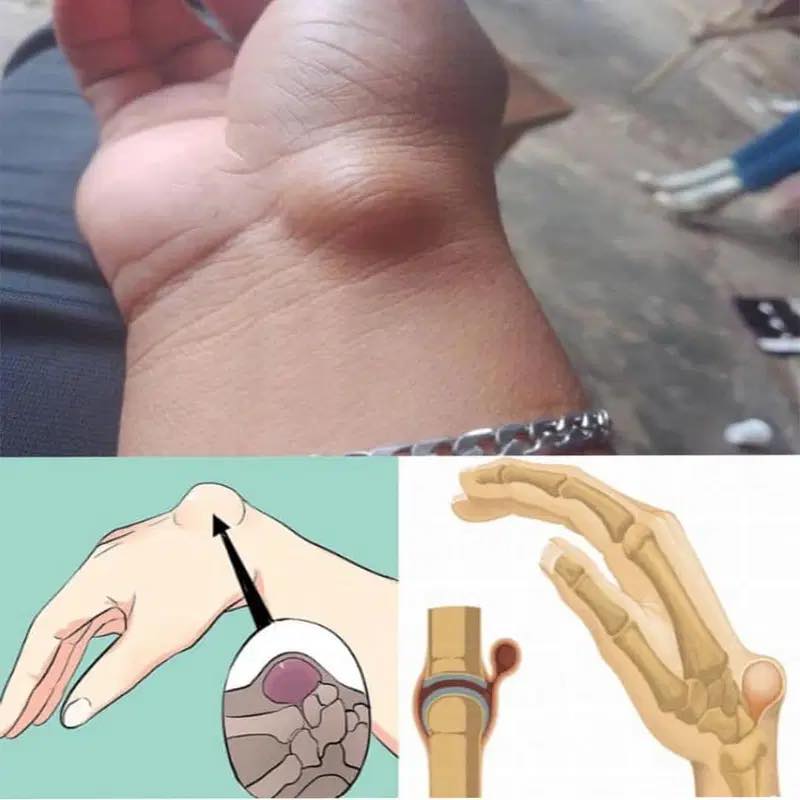Have you ever noticed a strange, soft bump suddenly appear on your wrist? Maybe it goes away on its own, only to return days or weeks later. If that sounds familiar, you might be dealing with a wrist ganglion — a common, usually harmless condition that can still be uncomfortable and even annoying.
So, what exactly is a wrist ganglion? Why does it show up, and what can you do about it? Here’s everything you need to know.

What Is a Wrist Ganglion?
A wrist ganglion — also known as a ganglion cyst or synovial cyst — is a fluid-filled lump that typically develops near joints or tendons in the wrist. These cysts are filled with synovial fluid, the same slippery substance that lubricates your joints and allows for smooth movement.
Ganglions most often appear on the back (dorsal side) or front (volar side) of the wrist. While they’re not cancerous or dangerous, they can cause discomfort, limit mobility, or press on nearby nerves.
What Causes Wrist Ganglions?
Doctors don’t always know the exact cause, but several risk factors can increase your likelihood of developing one:
-
Repetitive Wrist Movements: Activities that require frequent use of your wrist — like typing, gaming, texting, knitting, or certain sports (tennis, golf, gymnastics) — can increase the strain on your wrist and lead to a ganglion forming.
-
Past Injuries: Previous sprains, fractures, or direct trauma to the wrist may trigger cyst development.
-
Arthritis: People with osteoarthritis, especially in the wrist or finger joints, may be more prone to ganglion cysts.
-
Genetics: Some individuals are simply more predisposed to these cysts because of inherited traits.
Interestingly, wrist ganglions are more commonly seen in women than men, and they tend to occur in
Symptoms: How Do You Know It’s a Ganglion?
Wrist ganglions are typically easy to spot — especially when they become prominent. But the symptoms can vary based on the size and location of the cyst.
Here’s what to look out for:
-
Visible Lump: The most obvious sign is a round, soft, or slightly firm bump on the wrist. It might be small at first but can grow over time.
-
Pain or Discomfort: While some ganglions are painless, others can ache — especially with wrist movement or pressure.
-
Tingling or Numbness: If the cyst presses on a nearby nerve, it may cause tingling, numbness, or a dull ache in the hand or fingers.
-
Limited Range of Motion: In some cases, the cyst can interfere with normal wrist function, making certain movements uncomfortable or difficult.
One unique aspect of wrist ganglions is that their size can fluctuate. The cyst might seem to grow or shrink depending on your activity level — and sometimes it disappears completely for a while before reappearing.
How Are Wrist Ganglions Treated?
The good news? Many wrist ganglions go away on their own and don’t require any aggressive treatment. But if your cyst becomes painful or interferes with your daily life, there are a few ways to deal with it.
1. Wait and Watch
If the cyst isn’t bothering you, the best approach might be to do nothing at all. Many ganglions are harmless and resolve without treatment. A doctor may recommend monitoring it over time to see if it changes in size or causes symptoms.
2. Immobilization
Wearing a wrist brace or splint can limit motion and reduce pressure on the joint, which may shrink the cyst or prevent it from getting worse. This method is especially helpful if your ganglion causes mild discomfort during wrist movement.
3. Aspiration (Needle Drainage)
If the cyst is large or painful, a doctor may suggest draining the fluid with a needle — a simple, outpatient procedure called aspiration. It can offer immediate relief, but it’s worth noting that the cyst might return in the future since the outer wall of the cyst remains intact.
4. Surgery
For more persistent or severe cases — especially when the ganglion limits wrist mobility or keeps coming back — surgical removal may be the best solution. During surgery, the entire cyst, including its stalk, is removed. This option has a lower recurrence rate but does involve some recovery time.
When Should You See a Doctor?
Even though wrist ganglions are benign, it’s always a good idea to get a professional opinion if:
-
The lump grows rapidly
-
You experience pain or limited movement
-
You’re not sure if it’s a cyst or something more serious
-
The cyst keeps returning after previous treatment
Your doctor can usually diagnose a wrist ganglion just by examining it. In some cases, they might use an ultrasound or MRI to confirm the diagnosis or rule out other conditions like tumors or bone spurs.
Final Thoughts
Wrist ganglions may look strange or feel uncomfortable, but they’re very common and rarely cause serious issues. Whether yours disappears on its own or requires medical treatment, the key is understanding your options and knowing when to seek help.
So, the next time you notice a mysterious lump on your wrist, don’t panic — but don’t ignore it either. With the right approach, you can keep your wrists healthy and pain-free.





